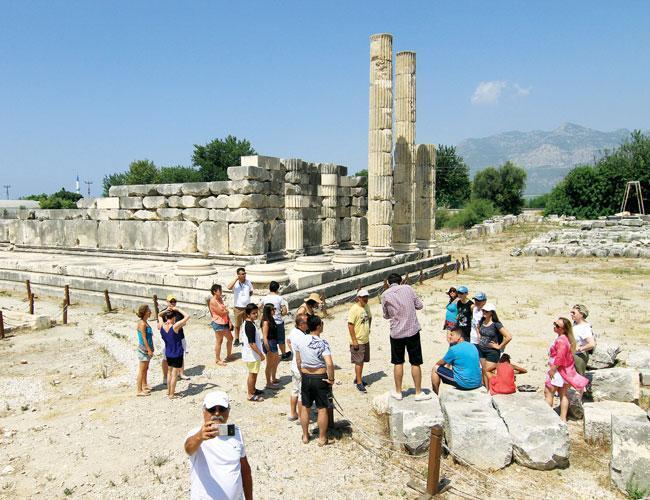
The Letoon, which is located in southwestern of Turkey, is a UNESCO World Heritage site and is “an archive containing the memory of the whole Lycian region,” said a university professor.
“The Letoon carries global values that are common for all mankind. It is an archive containing the memory of the whole Lycian region,” Sema Atik Korkmaz, head of the Letoon Archaeological Research and Excavation Project at Başkent University, told Anadolu Agency.
Korkmaz said the Letoon, a sanctuary of Leto near the ancient city Xanthos in Lycia, was added to the UNESCO World Heritage List in 1988.
According to the Turkish Culture and Tourism Ministry’s website, the Letoon, which is located in the Seydikemer district of the southwestern Muğla province, was built around seven B.C.
During the Antique age, Letoon was a religious center for Lycia. The temples of Leto, Apollon, and Artemis are also located at this historically important site. In addition, the site includes the ruins of a nymphaeum dating back to Hadrian, built on a water source that was considered sacred.
“It was the common worshipping area for all the cities. At the same time, the Letoon was a place where decisions were made,” Korkmaz said.
She added that the Letoon has attracted many visitors both from home and abroad.
“Located on the Lycian Way [Turkey’s touristic long-distance footpath, approximately 540 kilometers long stretching from the Aegean coast to the Mediterranean region], it also attracts trekkers,” Korkmaz added.
The professor also said the UNESCO World Heritage is a “prestige” list and shows the development level of countries.
According to the UNESCO website, the Letoon shows the blending of Lycian traditions and Hellenistic influence, especially in its funerary art.
“The epigraphic inscriptions are crucial for our understanding of the history of the Lycian people and their Indo-European language,” it added.
The Letoon was the cult center of Xanthos, the ancient federal sanctuary of the Lycian province and Lycian League of Cities, according to the UNESCO website.
“As many inscriptions found at the site demonstrate, the federal sanctuary was the place where all religious and political decisions of the ruling powers were declared to the public. The famous trilingual inscription, dating back to 337 B.C., features a text in Lycian and Greek as well as an Aramaic summary and was discovered near the temple of Apollo,” it said.